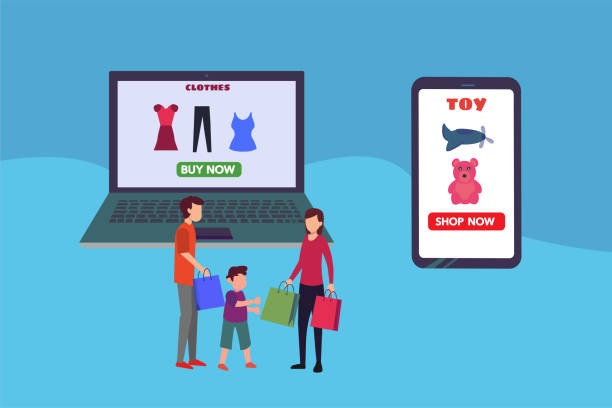In 2025, online shopping continues to transform at a breakneck pace. With each passing year, consumer expectations evolve, and businesses must adapt accordingly. If you want to stay ahead in the competitive e-commerce space, understanding the emerging online consumer behaviour trends is essential.
This article will guide you through these key trends, exploring how consumer behaviors are shifting and how you can optimize your online shopping experience to meet these demands.
As we dive into these trends, keep in mind that consumer behavior isn’t static. It’s shaped by technology, social influences, and economic shifts. By recognizing the behaviors that define the way people shop online today, you’ll be better positioned to create customer-centric strategies that drive sales and build loyalty in the long term.
1. The Rise of AI-Driven Personalization
Artificial intelligence (AI) has transitioned from a futuristic concept to a present-day necessity in e-commerce. Consumers now expect personalized experiences tailored to their individual preferences and behaviors. AI enables businesses to analyze vast amounts of data to predict customer needs, recommend products, and optimize the shopping journey in real-time.
Key Takeaway: Implementing AI-driven personalization can enhance customer satisfaction, increase conversion rates, and foster brand loyalty.
2. Social Commerce: Shopping Within Social Platforms
Social media platforms have become integral to the shopping experience. Features like Instagram Shops, TikTok’s “Shop Now” buttons, and Facebook Marketplace allow consumers to discover and purchase products without leaving their favorite apps. This seamless integration of shopping into social platforms has redefined the consumer journey.
Key Takeaway: Establish a strong presence on social media platforms, utilizing their shopping features to reach consumers where they spend a significant amount of time.
3. Demand for Sustainability and Ethical Practices
Modern consumers are increasingly making purchasing decisions based on a brand’s environmental and ethical practices. A significant portion of shoppers are willing to pay a premium for products that are sustainably sourced, ethically produced, and environmentally friendly.
Key Takeaway: Transparently communicate your brand’s sustainability efforts and ethical practices to build trust and appeal to conscientious consumers.
4. The Importance of Seamless Omnichannel Experiences
Consumers expect a cohesive shopping experience across all touchpoints, whether online or offline. The integration of physical and digital channels—such as click-and-collect services, virtual try-ons, and unified customer support—has become essential for meeting customer expectations.
Key Takeaway: Develop an omnichannel strategy that ensures a consistent and convenient experience for customers, regardless of how they interact with your brand.
5. The Influence of User-Generated Content and Reviews
User-generated content, including reviews, testimonials, and social media posts, significantly influences purchasing decisions. Consumers trust peer recommendations more than traditional advertising, making authentic user-generated content a powerful tool for building credibility.
Key Takeaway: Encourage satisfied customers to share their experiences and showcase user-generated content to build social proof and influence potential buyers.
6. The Shift Towards Subscription and Loyalty Programs
Subscription services and loyalty programs are gaining popularity as consumers seek convenience and value. These models offer personalized experiences, exclusive access, and consistent engagement, fostering long-term customer relationships.
Key Takeaway: Consider implementing subscription or loyalty programs that offer personalized benefits, enhancing customer retention and lifetime value.
7. The Demand for Fast and Flexible Delivery Options
Speed and flexibility in delivery are paramount for today’s consumers. The expectation for quick shipping, real-time tracking, and flexible delivery options has become the standard, with many consumers willing to pay extra for expedited services.
Key Takeaway: Optimize your logistics to offer fast, reliable, and flexible delivery options that meet customer expectations and enhance satisfaction.
8. The Role of Mobile Shopping
Mobile commerce continues to rise, with a significant number of consumers using smartphones for browsing and purchasing products. Mobile optimization, including responsive design and mobile-friendly payment options, is crucial for capturing this growing segment.
Key Takeaway: Ensure your online store is fully optimized for mobile devices, providing a seamless and user-friendly experience for mobile shoppers.
9. The Impact of Data Privacy Concerns
With increasing awareness of data privacy issues, consumers are becoming more cautious about sharing personal information. Brands that prioritize data security and transparently communicate their privacy policies can build trust and differentiate themselves in the marketplace.
Key Takeaway: Implement robust data protection measures and clearly communicate your privacy policies to reassure customers and comply with regulations.
10. The Influence of Economic Factors on Spending Behavior
Economic conditions, such as inflation and job market fluctuations, directly impact consumer spending behavior. In times of economic uncertainty, consumers may prioritize essential purchases, seek discounts, and delay non-essential spending.
Key Takeaway: Monitor economic trends and adjust your pricing, promotions, and product offerings to align with changing consumer spending patterns.
Conclusion
Understanding the evolving landscape of online consumer behavior trends is essential for businesses aiming to succeed in 2025. By embracing AI-driven personalization, integrating social commerce, committing to sustainability, offering seamless omnichannel experiences, leveraging user-generated content, implementing subscription and loyalty programs, optimizing delivery options, ensuring mobile compatibility, prioritizing data privacy, and adapting to economic factors, you can align your strategies with current consumer expectations.
At Nudge, we specialize in helping businesses navigate these trends by providing insights into consumer behavior and offering tools to enhance customer engagement. Book a Demo Now to learn how Nudge can assist you in adapting to the changing online shopping environment and driving business success.






